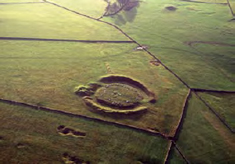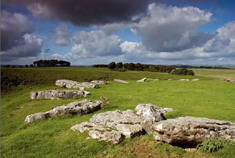Arbor Low Management Plan

Arbor Low and Gib Hill, near Monyash, is a monument complex recognised as being of national archaeological importance.
 It is a visually striking site, which offers long views across an attractive rural landscape, and lies close to the road in a major National Park, attracting a regular flow of visitors,some of whom value the stone circle and henge as a modern spiritual resource.
It is a visually striking site, which offers long views across an attractive rural landscape, and lies close to the road in a major National Park, attracting a regular flow of visitors,some of whom value the stone circle and henge as a modern spiritual resource.
All elements of the monument complex lie in farmland, much of it used as pasture.
Although access is easy (in contrast to more remote monuments) there is no public right of way to the site - an issue which has caused problems in the past.
Until very recently, both the major elements of the complex (the Arbor Low henge, stone circle and barrow and the Gib Hill double barrow) were designated by English Heritage as at "medium" risk and in "declining" condition. As a result of conservation work, their condition is now judged to be "improving".
The challenge facing those with responsibility for management of these monuments is how best to protect and sustain what is most significant about this complex site, while enabling enjoyment of its diverse qualities, and heightening awareness of its importance.
 This Conservation Plan, commissioned by English Heritage and drawn up by Stella McGuire for the Peak District National Park Authority, is intended to provide a long-term framework for conservation management of the site and its immediate setting.
This Conservation Plan, commissioned by English Heritage and drawn up by Stella McGuire for the Peak District National Park Authority, is intended to provide a long-term framework for conservation management of the site and its immediate setting.
Its remit is firstly to assess the complex significance of Arbor Low and Gib Hill and any threats to the various qualities for which the monuments are valued, and secondly to use this assessment as a basis to propose policies which will enable the site's significance to be sustained or heightened, and will attract maximum support from those involved in transforming policy into practice.
Arbor Low Conservation Plan 2008 (1.9MB)

